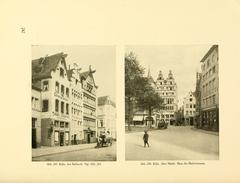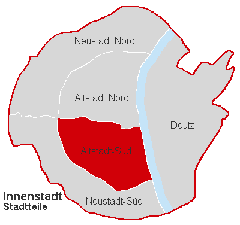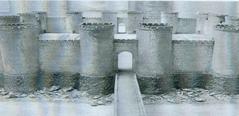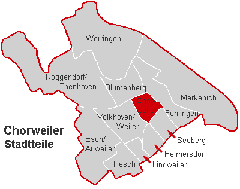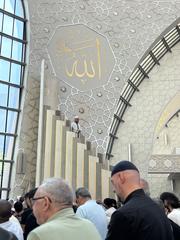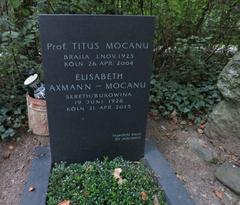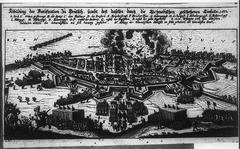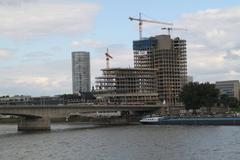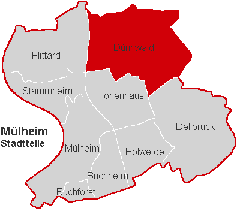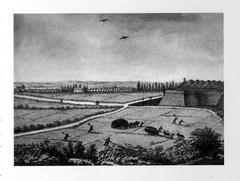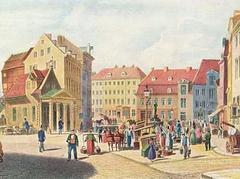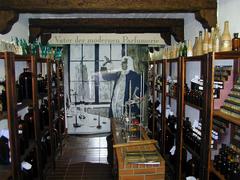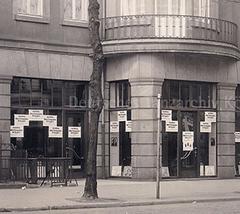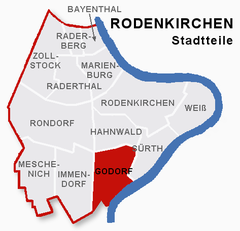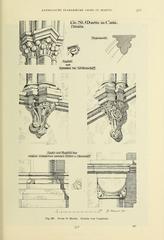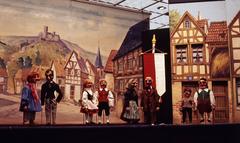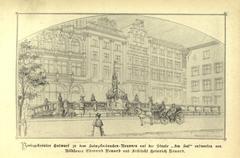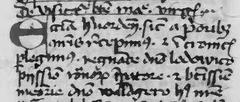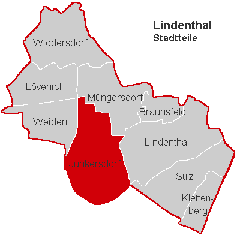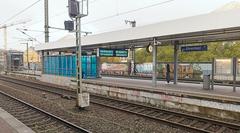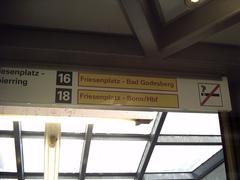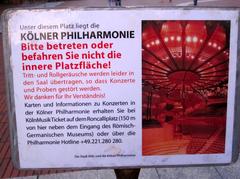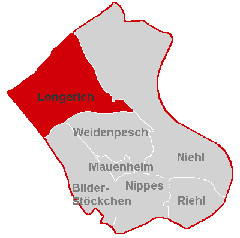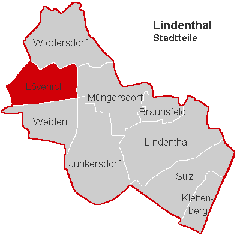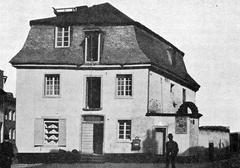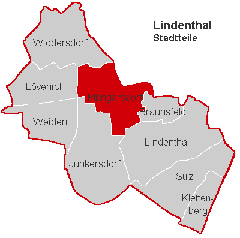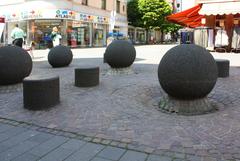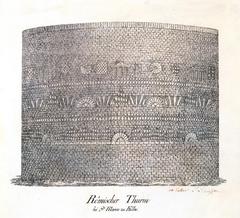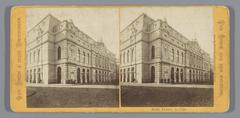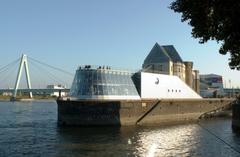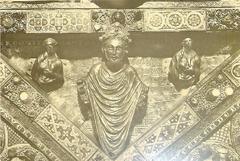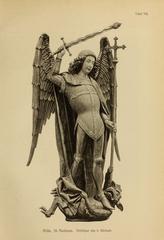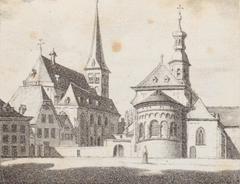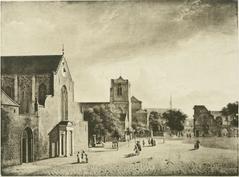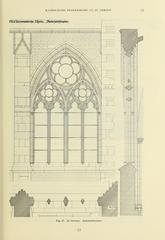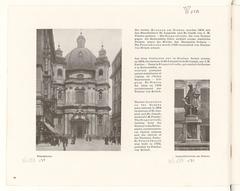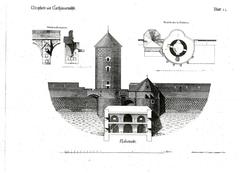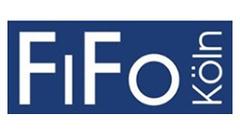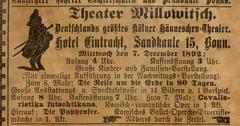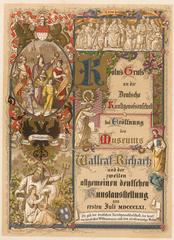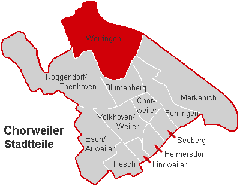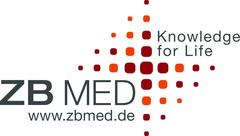Comprehensive Guide to Visiting Am Ginsterpfad, Cologne, Germany
Date: 01/08/2024
Introduction
Am Ginsterpfad in Cologne, Germany, presents a unique fusion of historical richness and natural beauty, making it a compelling destination for tourists and locals alike. This guide aims to provide a comprehensive overview of Am Ginsterpfad, covering its historical significance, architectural marvels, visitor information, and tips for an enriching experience. Cologne, known as Colonia Claudia Ara Agrippinensium during the Roman era, has a storied past that is vividly reflected in the area around Am Ginsterpfad (Livius). From the remnants of Roman structures to the medieval grandeur of buildings like Groß St. Martin, the area is a microcosm of Cologne’s architectural evolution (Germany Travel Blog). The devastating impacts of World War II and subsequent reconstruction efforts are also evident, showcasing the resilience and dedication of the city’s inhabitants (National WWII Museum).
In addition to its historical allure, Am Ginsterpfad is home to a 21-hectare nature reserve, offering a sanctuary for nearly 70 species of animals and plants (Wikipedia). This guide will delve into the visiting hours, ticket information, and essential tips for exploring both the historical and natural aspects of Am Ginsterpfad. Whether you are interested in the architectural splendor of the Cologne Cathedral or the serene observation points of the nature reserve, this guide will help you navigate your visit effectively.
Table of Contents
- [History and Significance](#history-and-significancehistory-and-significance)
- [Roman Origins and Early Development](#roman-origins-and-early-developmentroman-origins-and-early-development)
- [Medieval Significance](#medieval-significancemedieval-significance)
- [Impact of World War II](#impact-of-world-war-iiimpact-of-world-war-ii)
- [Architectural and Cultural Significance](#architectural-and-cultural-significancearchitectural-and-cultural-significance)
- [Modern-Day Relevance](#modern-day-relevancemodern-day-relevance)
- [Visitor Information](#visitor-informationvisitor-information)
- [Visiting Hours](#visiting-hoursvisiting-hours)
- [Tickets and Accessibility](#tickets-and-accessibilitytickets-and-accessibility)
- [Visitor Tips](#visitor-tipsvisitor-tips)
- [Key Attractions](#key-attractionskey-attractions)
- [Special Events and Guided Tours](#special-events-and-guided-toursspecial-events-and-guided-tours)
- [Photographic Spots](#photographic-spotsphotographic-spots)
- [Frequently Asked Questions](#frequently-asked-questionsfrequently-asked-questions)
- [Conclusion](#conclusionconclusion)
- [References](#referencesreferences)
History and Significance
Roman Origins and Early Development
Am Ginsterpfad, located in Cologne, Germany, is steeped in a rich history that dates back to the Roman era. Cologne, originally known as Colonia Claudia Ara Agrippinensium, was founded in 50 AD by the Romans. The city quickly became a significant military and trade hub due to its strategic location along the Rhine River. The area around Am Ginsterpfad likely served as a residential and commercial zone during this period, contributing to the city’s economic and cultural development (Livius).
Medieval Significance
During the medieval period, Cologne continued to flourish as a major European city. The area around Am Ginsterpfad was part of the city’s expansion, characterized by the construction of Romanesque churches and other significant buildings. One notable example is the Groß St. Martin, a Romanesque church established above a former Roman chapel, which suffered significant damage during World War II but was meticulously restored (Germany Travel Blog).
Impact of World War II
World War II had a profound impact on Cologne, including the area around Am Ginsterpfad. The city was heavily bombed, resulting in the destruction of approximately 95% of its buildings. The post-war reconstruction efforts were monumental, with a focus on preserving historical sites while modernizing the city. The restoration of landmarks such as the Cologne Cathedral and the Roman-Germanic Museum highlights the city’s dedication to preserving its rich heritage (National WWII Museum).
Architectural and Cultural Significance
Am Ginsterpfad is not just a historical site but also a testament to Cologne’s architectural and cultural evolution. The area features a blend of ancient Roman structures, medieval buildings, and modern architecture. The Cologne Cathedral, a UNESCO World Heritage Site, stands as a symbol of Gothic architecture and religious significance. Construction of the cathedral began in 1248 and was completed in 1880, showcasing the dedication and craftsmanship of generations (UNESCO).
Modern-Day Relevance
Today, Am Ginsterpfad is a vibrant area that attracts tourists and locals alike. The Hohenzollern Bridge, constructed between 1907 and 1911, is one of the city’s iconic landmarks. It spans the Rhine River and is adorned with “love locks” left by couples from around the world, symbolizing eternal love (Germany Travel Blog). The area also hosts various cultural events and festivals, contributing to Cologne’s reputation as a lively and dynamic city.
Visitor Information
Visiting Hours
Am Ginsterpfad and its surrounding attractions are generally open to visitors throughout the day. Specific visiting hours for key sites such as the Cologne Cathedral and the Roman-Germanic Museum can vary, so it is advisable to check their official websites for the most accurate information (Cologne Cathedral, Roman-Germanic Museum).
Tickets and Accessibility
- Cologne Cathedral: Entry is free, but guided tours and access to the tower may require tickets. Prices and more details can be found on the cathedral’s official site (Cologne Cathedral).
- Roman-Germanic Museum: Tickets are required for entry, with discounts available for students and seniors. Accessibility details and ticket prices are available on the museum’s website (Roman-Germanic Museum).
Visitor Tips
- KölnCard: This card offers free travel on public transportation and discounts at numerous attractions, making it a cost-effective option for tourists (Cologne to Bonn).
- Weather Preparedness: August in Cologne can be unpredictable, with sudden rain showers. Packing a light rain jacket or umbrella is advisable (Germany Travel Blog).
- Local Cuisine: Don’t miss out on trying Kölsch beer and local delicacies at the numerous beer gardens and restaurants in the area (My Germany Vacation).
Key Attractions
- Cologne Cathedral: As the largest Gothic cathedral in Germany, it offers breathtaking views and a deep dive into the city’s religious history. Guided tours are recommended for a comprehensive understanding of its significance (UNESCO).
- Roman-Germanic Museum: This museum houses artifacts from Cologne’s Roman past, including the impressive Dionysus mosaic discovered in 1941 (Germany Travel Blog).
- Chocolate Museum: Located in the Rheinauhafen district, this museum offers a delightful experience for chocolate lovers, complete with a glass-walled production facility (Germany Travel Blog).
Special Events and Guided Tours
- Cologne Carnival: Held in February, this lively festival offers a unique opportunity to experience local traditions, music, and cuisine.
- Christmas Markets: Visit in December to enjoy the festive atmosphere, with numerous markets offering crafts, food, and holiday cheer.
- Guided Tours: Available for major attractions like the Cologne Cathedral and the Roman-Germanic Museum. Check their official websites for schedules and booking information.
Photographic Spots
- Cologne Cathedral: The exterior and interior offer stunning photographic opportunities.
- Hohenzollern Bridge: Capture the thousands of love locks and the panoramic views of the Rhine River.
- Old Town: The historic buildings and narrow streets provide a picturesque setting.
Frequently Asked Questions
Q: What are the visiting hours of Am Ginsterpfad?
A: Visiting hours for Am Ginsterpfad and its surrounding attractions vary. It is best to check the official websites of specific sites like the Cologne Cathedral and the Roman-Germanic Museum for the most accurate information.
Q: How much do tickets cost for Am Ginsterpfad?
A: Entry to Am Ginsterpfad itself is generally free, but tickets may be required for specific attractions such as the Cologne Cathedral tower and the Roman-Germanic Museum. Prices can be found on their respective websites.
Q: What are the best times to visit Am Ginsterpfad?
A: Am Ginsterpfad can be visited year-round, but the best times are during spring and autumn when the weather is mild, and cultural events are abundant.
Conclusion
Am Ginsterpfad in Cologne is a microcosm of the city’s rich history and cultural diversity. From its Roman origins to its modern-day significance, the area offers a unique blend of historical landmarks, architectural marvels, and cultural experiences. Whether you’re a history buff, an architecture enthusiast, or simply looking to explore a vibrant city, Am Ginsterpfad has something to offer for everyone. Download the Audiala mobile app for more updates, and be sure to check out our other related posts on Cologne’s historical sites and attractions.
